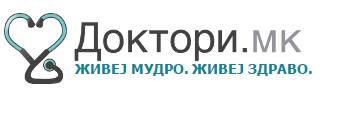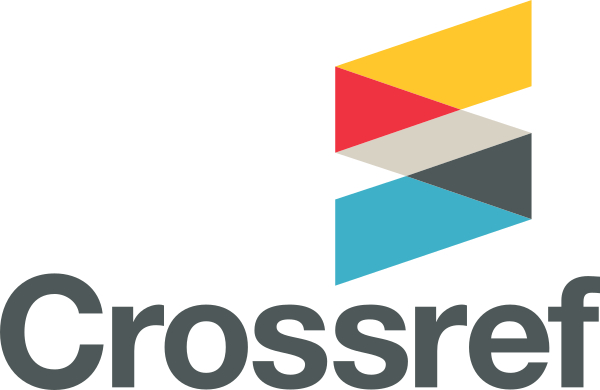- Ajdinski G, Takashmanova T, Petrov R, Kopachev D. Effects of developmental compensatory programme in activities with children with severe mental retardation. Journal of Special Education and Rehabilitation 2005; 6(3-4):61-76.
- Ajdinski G. The role of the special teacher in the process of inclusion in the regular primary schools. Journal of Special Education and Rehabilitation 2007; 8(1-2):5-14.
- Ajdinski G, Trajkovski V. Postgraduate studies at the institute of special education and rehabilitation. Journal of Special Education and Rehabilitation 2007; 8(3-4):15-24.
- Ajdinski Lj, Ajdinski G, Kitkanj Z. Application of terminology for people with disability in the world and in our country. Journal of Special Education and Rehabilitation 2004; 5(1-2):145-156.
- Ajdinski Lj. Realization of integration of children with special needs education in the Republic of Macedonia. Journal of Special Education and Rehabilitation 2004; 5(1-2):23-34.
- Ajdinski Lj. Survey of establishing institutional system for care, education and rehabilitation of disabled people in the Republic of Macedonia in the period 1946-1996. Journal of Special Education and Rehabilitation 2004; 5(3-4):125-139.
- Andreevski V. Importance of social work in implementation of social care for disabled people. Journal of Special Education and Rehabilitation 2004; 5(3-4):85-96.
- Angelovska-Galevska N. Tendencies in the development of the methodology of research in the special education. Journal of Special Education and Rehabilitation 2004; 5(3-4):19-29.
- Angelovska-Galevska N. Types of scientific researches in special education. Journal of Special Education and Rehabilitation 2005; 6(3-4):7-16.
- Arapovikj D, Pranjikj V. The syntactical ability of a young girls with Williams syndrome. Journal of Special Education and Rehabilitation 2008; 9(1-2):29-40.
- Arnaudova S. A school to match any child. Journal of Special Education and Rehabilitation 2005; 6(3-4):105-111.
- Arnaudova V, Takashmanova-Sokolovska T, Jachova Z. Peer interaction in classes which use the conceot of inclusive education. Journal of Special Education and Rehabilitation 2004; 5(1-2):87-98
- Bajlozova L. The role of special teacher in special education and rehabilitation diagnosis. Journal of Special Education and Rehabilitation 2004; 5(3-4):31-42.
- Casanova M, Farag A, El-baz A, Mott M, Hassan H, Fahmi R et al. Abnormalities of the gyral window in autism: A microscopic correlate to a putative minicolumnopathy. Journal of Special Education and Rehabilitation 2006; 7(1-2):85-101.
- Casanova M, Mott M. The neuropathology of autism: a selective review.Journal of Special Education and Rehabilitation 2006; 7(3-4):21-35.
- Chadiev KS. Baha system and its use. Journal of Special Education and Rehabilitation 2004; 5(3-4):147-152.
- Chadinovski B. National strategy for equal rights of people with disabilities in the Republic of Macedonia with comments on its realization. Journal of Special Education and Rehabilitation 2007; 8(3-4):89-97.
- Duma-Vasovska I, Davcheva-Chakar M, Kopacheva-Barsova G. Risky factors, improving diagnostic accuracy and prevention of otitis media with effusion-in early childhood. . Journal of Special Education and Rehabilitation 2007; 8(3-4):25-32.
- Efremov Lj. Conditions of people with disabilities employment in the Republic of Macedonia. Journal of Special Education and Rehabilitation 2007; 8(1-2):43-46.
- Efremov Lj. Employment of people with disabilities in the Republic of Macedonia. Journal of Special Education and Rehabilitation 2007; 8(3-4):67-70.
- Ferri R, Langer V, Reversi S. An investigation on the school integration in Italy: Mainstream and special teachers' point of view, and sense of loneliness in disabled and not disabled students. Journal of Special Education and Rehabilitation 2004; 5(1-2):177-192.
- Filipova S, Popovska A, Lozanovska B, Gjurchinovska L. Case report of stuttering in an initial phase of early childhood. Journal of Special Education and Rehabilitation 2007; 8(3-4):80-88.
- Filipova S, Popovska A, Shoster D, Gjurchinovska L. Developmental level of thinging operations at children with speech impairments. Journal of Special Education and Rehabilitation 2008; 9(3-4):39-50.
- Galevska V. Case report of a mentally retarded child. Journal of Special Education and Rehabilitation 2006; 7(1-2):49-58.
- Georgieva D, Stefanovska A. Role of the computerized speech lab (CSL) and multidimensional voice program (MDVP) in voice disorders' instrumental diagnostics. Journal of Special Education and Rehabilitation 2007; 8(3-4):113-127.
- Glumbikj N, Bozhinovikj A. Semantic verbal fluency of the bilingual children with mild intellectual disability. Journal of Special Education and Rehabilitation 2005; 6(1-2):99-108.
- Glumbikj N, Bozhinovikj A. Two fold semilnguism and deixis. Journal of Special Education and Rehabilitation 2006; 7(1-2):17-22.
- Jachova Z, Grut L, Valso-Eide C, Tyrmi G, Karovska A. “Workplaces for all” a pilot study on environment and working conditions for people with disabilities in Macedonia. Journal of Special Education and Rehabilitation 2006; 7(3-4):45-56.
- Jachova Z, Karovska A. Early diagnosis as a precondition for a successful cochlear implantation. Journal of Special Education and Rehabilitation 2007; 8(3-4):41-48.
- Jachova Z, Karovska A. Analyses of the teacher-pupil interaction within the inclusive classroom – case study of a child with a cochlear implant. Journal of Special Education and Rehabilitation 2008; 9(3-4): 7-22.
- Jachova Z. Kovacheva O, Karovska A. Differences between American sign language (ASL) and british sign language (BSL). Journal of Special Education and Rehabilitation 2008; 9(1-2):41-54.
- Jovanovski B. Barriers-current conditions and recommendations for overcoming them. Journal of Special Education and Rehabilitation 2007; 8(3-4):71-79.\
- Karanfiloski A, Trajkovski V. Sexual education for persons with intellectual disabilities. Journal of Special Education and Rehabilitation 2008; 9(1-2):55-66.
- Karevska A, Trajkovski V. Etiology of speech disorders in “Institute for rehabilitation of hearing, speech and voice” – Skopje. Journal of Special Education and Rehabilitation 2005; 6(1-2):27-34.
- Karikj J. Mathematical problem solving, modeling and application. Journal of Special Education and Rehabilitation 2005; 6(1-2):53-60.
- Karikj J, Radovanovikj V. How hearing impaired pupils comprehend concepts of living nature? Journal of Special Education and Rehabilitation 2005; 6(3-4):17-23.
- Karovska A, Jachova Z. Transitions of the children with disabilities from the early intervention in the regular schools. Journal of Special Education and Rehabilitation 2006; 7(3-4):37-44.
- Keramitchievska-Biljanovska V, Mitrevska R, Sabolich N. Integration – Inclusion. Journal of Special Education and Rehabilitation 2004; 5(1-2):133-144.
- Kovachevikj J. Educational effects from the work with a project curriculum with hearing impairment children. Journal of Special Education and Rehabilitation 2008; 9(1-2):18-28.
- Kovachevikj R, Bijedikj M, Kuralikj-Kjishikj L, Muftikj E. Family risk factors an indicators of behavioral problems with youth. Journal of Special Education and Rehabilitation 2009; 10(1-2):63-71.
- Kovachevikj R, Meschalikj Sh. Relation between school results and family characteristics of the students with behavioral disorders in primary schools. Journal of Special Education and Rehabilitation 2005; 6(3-4):77-87.
- Krajnc-Joldikj S. Role of mobile special educator and motor-disabled children in regular primary school. Journal of Special Education and Rehabilitation 2006; 7(1-2):59-64.
- Kranjc-Joldikj S. Rehabilitation practical program. Journal of Special Education and Rehabilitation 2007; 8(1-2):47-52.
- Krajnc-Joldikj S. Physical disability and drama activity. Journal of Special Education and Rehabilitation 2008; 9(1-2):86-92.
- Krstikj T, Dukikj O. Psychological evaluation and treatment of a child with hyperkinetic disorder – case report.Journal of Special Education and Rehabilitation 2009; 10(3-4): 122-128.
- Langer V, Ajdinski G, Feri R, Petrov R. An inter-university co-operation.Report of a 2-years experience. Journal of Special Education and Rehabilitation 2006; 7(1-2): 5-16.
- Langher V, Ricci ME, Reversi S, Krstikj N. ADHD and loneliness social dissatisfaction in inclusive school from an individual-context paradigm. Journal of Special Education and Rehabilitation 2009; 10(3-4): 67-88.
- Lazarovska V, Dimitrovska Zh. A presentation of a case of a child suffering from autism. Journal of Special Education and Rehabilitation 2005; 6(1-2):69-73.
- Lazova-Zdravkovska S. Process of deinstitutionalization of people with disabilities in the Republic of Macedonia. Journal of Special Education and Rehabilitation 2007; 8(3-4):49-58.
- Preece D. Social care support services in England for children and adults with autism spectrum disorders and their families. Journal of Special Education and Rehabilitation 2008; 9(3-4):63-72.
- Pribanikj Lj, Milkovikj M. The benefit of early exposure to sign language.Journal of Special Education and Rehabilitation 2009; 10(3-4):28-39.
- Ramo N. Petrov R. Sensitive communication and interaction through the principles of the ICDP program. Journal of Special Education and Rehabilitation 2008; 9(3-4):73-83.
- Rashikj O, Trajkovski V. Sexual abuse of people with mental retardation. Journal of Special Education and Rehabilitation 2006; 7(3-4):57-67.
- Rashikj O, Trajkovski V. Sex education of persons with disabilities. Journal of Special Education and Rehabilitation 2009; 10(1-2):7-24.
- Reichelt K, Nödland M, Fosse K, Knivsberg AM. AD/HD: Possible diagnosis and treatment. Journal of Special Education and Rehabilitation 2008; 9(3-4):85-95.
- Reynaert J. Impact of international legislation on the disability field. Journal of Special Education and Rehabilitation 2006; 7(1-2):77-81.
- Reynaert J. Towards real stakeholder cooperation in Europe.Journal of Special Education and Rehabilitation 2006; 7(1-2):103-108.
- Salihovikj N, Junuzovikj-Zunikj L, Duranovikj M, Ibrahimagikj A, Beganovikj L. Stuttering therapy for a child at intermediate stuttering level. Journal of Special Education and Rehabilitation 2009; 10(3-4):41-51.
- Savikj Lj. Some additions to the history of surdology in the Republic of Macedonia. Journal of Special Education and Rehabilitation 2006; 7(3-4):5-20.
- Shopkikj C. Informing blind people – between reality and possibility, I read, hear and write – I exist. Journal of Special Education and Rehabilitation 2004; 5(3-4):73-84.
- Trajkovski V. Etiology of autism. Journal of Special Education and Rehabilitation 2004; 5(1-2):61-74.
- Trajkovski V. Innovations in therapy of autism, Journal of Special Education and Rehabilitation 2004; 5(3-4):43-56.
- Trajkovski V, Vasilevska K, Ajdinski Lj, Spiroski M. Epidemiological characteristics of autism in Republic of
|
|
- Ajdinski Lj. Condition, organization and directions in solving the problem of people with autism in the Republic of Macedonia. Journal of Special Education and Rehabilitation 2005; 6(1-2):43-52.
- Ajdinski Lj. Proposal for more appropriate education of children with developmental problems and special education needs. Journal of Special Education and Rehabilitation 2005; 6(3-4):99-104.
- Ajdinski Lj. Service institutions in Macedonia for care, education and rehabilitation of children with special education needs. Journal of Special Education and Rehabilitation 2006; 7(1-2):65-76.
- Ajdinski Lj. National and local service provides for people with disabilities in the Republic of Macedonia. Journal of Special Education and Rehabilitation 2006; 7(3-4):69-73.
- Ajdinski Lj. The conditions, problems and development of education and employment of people with disabilities in the Republic of Macedonia. Journal of Special Education and Rehabilitation 2007; 8(1-2):25-32.
- Ajdinski Lj. Social security of people with disabilities. Journal of Special Education and Rehabilitation 2007; 8(3-4):98-104.
- Chichevska-Jovanova N, Dimitrova-Radojichikj D. Assessment of visual perception in students with special educational needs. Journal of Special Education and Rehabilitation 2007; 8(3-4): 59-66.
- Chichevska-Jovanova N, Dimitrova-Radojichikj D. Selfevaluation of competences of the special educators and rehabilitators in the special institution. Journal of Special Education and Rehabilitation 2009; 10(1-2):25-32.
- Chordikj A, Markovikj S. Inclusion as opening of the school towards a child and deinstitutionalization. Journal of Special Education and Rehabilitation 2004; 5(1-2):193-208.
- Chukikj R, Eminovikj F, Shutkovikj M. Hardships of cerebral palsy pupils in acquiring fine arts classes tasks and expected accomplishments. Journal of Special Education and Rehabilitation 2008; 9(1-2):77-85.
- Chukikj R, Odovikj G, Eminovikj F. The curriculums of the elementary education for students with motor disabilities. Journal of Special Education and Rehabilitation 2007; 8(1-2):71-89.
- Damovska L. The Waldorf pedagogy and children with special education needs. Journal of Special Education and Rehabilitation 2005; 6(1-2):35-42.
- Dimitrova-Radojichikj D, Chichevska-Jovanova N. Implementation of the Bologna process at the institute of special education and rehabilitation. Journal of Special Education and Rehabilitation 2007; 8(3-4):5-14.
- Dimkova M, Petrov R. The status of the employed people with mental retardation in the protective companies in the Republic of Macedonia according to the contemporary legislation. Journal of Special Education and Rehabilitation 2006; 7(1-2):41-48.
- Dukovska V, Juzevski Zh. Psychomotor development in premature infants until the end of their third year of life. Journal of Special Education and Rehabilitation 2009; 10(1-2):33-47.
- Grobler M. Syntactic deficit in children with specific language impairment in Slovene language. Journal of Special Education and Rehabilitation 2006; 7(1-2):23-30.
- Grobler M, Arapovich D. Microlinguistic analysis of narrative produced by 10-years old children with specific language impairment. Journal of Special Education and Rehabilitation 2007; 8(1-2):15-24.
- Grozdanovska B, Trajkovski V. Sequelae of acute bacterial meningitis treated at the clinic for infectious diseases and febrile conditions in Skopje. Journal of Special Education and Rehabilitation 2005; 6(3-4):40-47.
- Grujevski G. Review on law for employment of disabled people. Journal of Special Education and Rehabilitation 2004; 5(1-2):157-162.
- Holm M, Frischmunt. Vocal development as a main condition in early speech and language acquisition. Journal of Special Education and Rehabilitation 2005; 6(1-2):91-98.
- Hristova A, Filipova S. Appraisal of the orthography level of the handwriting in easy mental retarded children.Journal of Special Education and Rehabilitation 2009; 10(3-4):110-121.
- Ilikj-Stoshovikj D, Nikolikj S, Nedovikj M. The attitudes of teachers towered numeric assmessment in schools for physically disabled pupils. Journal of Special Education and Rehabilitation 2005; 6(3-4):49-59.
- Ilikj-Stoshovikj D, Nikolikj S. Individual education programs. Journal of Special Education and Rehabilitation 2006; 7(1-2):31-40.
- Jablan B. Zhigikj V, Stanimirovikj D. The assessment of the level development of spatial orientation in children with visual impairmants. Journal of Special Education and Rehabilitation 2008; 9(1-2):7-17.
- Jachova Z. Inclusive education of children with special needs in Republic of Macedonia. Journal of Special Education and Rehabilitation 2004; 5(1-2):35-46.
- Jachova Z, Dimitrova-Radojichikj D. Chichevska-Jovanova N. Early intervenetion of children with disabilities. Journal of Special Education and Rehabilitation 2004; 5(1-2):47-59.
- Kiefer J, Tillein J, Ilberg VC, Pfennigdorff T, Stüurzebecher E, Klinke R, ed al. Fundamental aspects and first results of the clinical application of combined electric and acoustic stimulation of the auditory system. Journal of Special Education and Rehabilitation 2004; 5(1-2):75-86.
- Kitkanj Z. Need for changing and amending the legal regulations. Journal of Special Education and Rehabilitation 2007; 8(1-2):53-57.
- Kitkanj Z. Criminality at minors with intellectual deficiency. Journal of Special Education and Rehabilitation 2009; 10(1-2):73-83.
- Kopachev D. Implementation of international classification of function, disability and health in field of pediatrics. Journal of Special Education and Rehabilitation 2004; 5(3-4):103-109.
- Kopachev D. Neuropsychological development dynamic approach in children with autism. Journal of Special Education and Rehabilitation 2005; 6(1-2):5-16.
- Kopacheva G, Chakar M, Dubrovska L. The presence of adenoid vegetations and nasal speech, and hearing loss in relation to secretory otitis media. Journal of Special Education and Rehabilitation 2004; 5(3-4):57-62.
- Kopacheva-Barsova G, Davcheva-Chakar M, Duma-Vasovska I.Nasal septum deviation and conductivity hearing loss in children. Journal of Special Education and Rehabilitation 2007; 8(3-4):33-40.
- Kossewska J. Personal identity in deaf adolescents. Journal of Special Education and Rehabilitation 2008; 9(1-2):67-75.
- Kostikj-Ivanovikj V. Behavioral problems in children with mild and moderate intellecttual disability. Journal of Special Education and Rehabilitation 2009; 10(1-2):49-62.
- Kostikj-Ivanovikj V. Evaluation of educational abilities in children with mild intellectual disabilities, first grade students, from special primary school. Journal of Special Education and Rehabilitation 2009; 10(3-4):89-101.
- Leko A, Prizl Jakovac T, Aphasia and meningoencephalitis – a case study. Journal of Special Education and Rehabilitation 2009; 10(3-4):103-109.
- Maljanovski K. Criminal, legal, social and terminological aspects sexual intercourse with disabled person. Journal of Special Education and Rehabilitation 2004; 5(3-4):111-123.
- Milankov V, Mikov A. Disorders of the sound articulation in preterm children.Journal of Special Education and Rehabilitation 2009; 10(3-4):52-65.
- Miloshevikj S. The frequency of use of a attributive exponents in the language of completely and partially deaf children. Journal of Special Education and Rehabilitation 2006; 7(3-4):77-84.
- Nedovikj G, Jachova Z, Rapaikj D. Social functioning of children with malignant diseases.Journal of Special Education and Rehabilitation 2009; 10(3-4):7-27.
- Ninkovikj D. Biological foundation of human abnormal growth and development. Journal of Special Education and Rehabilitation 2004; 5(3-4):179-187.
- Ozhek S. The process of separation and individuation as the risk factor in psychosocial development of persons with physical disabilities. Journal of Special Education and Rehabilitation 2007; 8(1-2):33-41.
- Ozhek S. Overprotection and adolescents with physical disabilities. Journal of Special Education and Rehabilitation 2008; 9(1-2):100-106.
- Petrov I.Psychical therapy of children's fears due to diseases and somatic injuries. Journal of Special Education and Rehabilitation 2004; 5(3-4):63-72.
- Petrov R, Kopachev D, Takashmanova T. Process of deinstitutionalization of children from special institute in Demir Kapija. Journal of Special Education and Rehabilitation 2004; 5(1-2):119-132.
- Petrova V, Petrov R. Treatment of children with autism within the group of children with mental retardation. Journal of Special Education and Rehabilitation 2005; 6(1-2):61-68.
- Singh V. Rehabilitation of autism with immune modulation therapy. Journal of Special Education and Rehabilitation 2004; 5(3-4):161-178.
- Singh V. Elevation of serum c-reactive protein and S100 proteins for systematic inflammation in autistic children. Journal of Special Education and Rehabilitation 2005; 6(3-4):117-125.
- Singh V. Serum analysis of amyloid beta-protein 1-40 in healthy subjects, autistic children and Alzheimer’s patients. Journal of Special Education and Rehabilitation 2008; 9(1-2):93-99.
- Singh V, Gerdes L. Neurorehabilitation of post-traumatic stress and depressive behaviors by brain state conditioning. Journal of Special Education and Rehabilitation 2009; 10(1-2):85-97.
- Soltirova E. Tiflological diagnostics and early intervention with children with damaged sight. Journal of Special Education and Rehabilitation 2004; 5(1-2): 99-108.
- Spiroski M. Immunological approach to the diagnosis of autism. Journal of Special Education and Rehabilitation 2005; 6(1-2):17-26.
- Stojmenovska M, Filipova M. Review of a case of child with acquired aphasia. Journal of Special Education and Rehabilitation 2004; 5(3-4):97-102.
- Stojmenovska M, Filipova S. Description of child with alalia. Journal of Special Education and Rehabilitation 2005; 6(3-4):89-97.
- Stoshljevikj M, Eminovikj F, Nikikj R, Achikj G, Pacikj S. Cerebral palsy and music achievement.Journal of Special Education and Rehabilitation 2008; 9(3-4):23-37.
- Temkov K. Special education and rehabilitation as an elementary bioethics. Journal of Special Education and Rehabilitation 2004; 5(3-4):7-17.
- Trajkovski T, Andreevski V. Some aspects and relations between altruism, socialization and integration in the process of humanization of the life conditions of disabled persons. Journal of Special Education and Rehabilitation 2004; 5(1-2):109-118. Macedonia. Journal of Special Education and Rehabilitation 2005; 6(3-4):25-39.
- Velotti P. Family resources: Perceived social support and parents adjustment.Journal of Special Education and Rehabilitation 2008; 9(3-4):51-61.
|
 SNIP 0.059
SNIP 0.059 IPP 0.07
IPP 0.07 SJR 0.13
SJR 0.13 h5-index 7
h5-index 7 Google-based impact factor: 0.68
Google-based impact factor: 0.68















